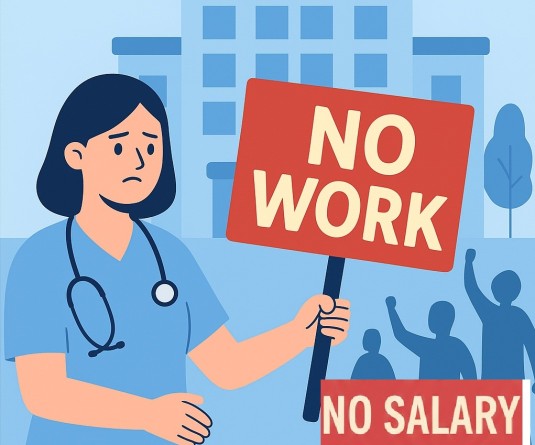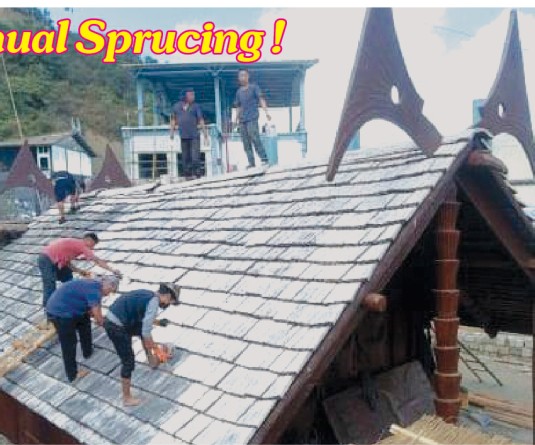
AH & Vety on process of increasing animal livestock production and attain self-sufficiency by 2025
Morung Express News
Kohima | November 18
The Department of Animal Husbandry and Veterinary Services along with the Nagaland Livestock Development Board (NLDB) in collaboration with the National Bureau of Animal Genetic Resources (ICAR-NBAGR) organised a one day brain storming session on Animal Genetic Resources in Nagaland on November 18 at Hotel Japfü, Kohima.
S. Chuba Longkumer, Parliamentary Secretary, AH & Veterinary Services graced the occasion as the chief guest.
MK Mero, Commissioner & Secretary to Government of Nagaland, Department of AH & Veterinary Services who chaired the inaugural session mentioned that Nagaland is still short of meat production with a total of 213 crore production imported. The Department is on the process of increasing animal livestock production and come out with self-sufficiency with its plan of policies on pig breeding to attain self sufficiency by 2025.
Dr. I.P Khala, Director, AH & Veterinary Services state that many are not aware of the fact that Nagaland is the habitat to various animal genetics resources of which undocumented species or breed could have been even wiped out or undergone genetic dilution.
“There has been drastic change in the outlook of livestock rearing, small and tiny local indigenous animals and birds which was once available everywhere and acclaimed as more disease resistant, low cost management and whose meat and milk being very tasty are now available only in some pocket areas, this calls for setting up of gene banks/nucleus herds, preferably in the breeding tracts before imminent extinction,” said Dr. Khala.
However local indigenous livestock being the backbone of the rural economy, Dr. Khala hoped that the session will in turn identify the state unique animal genetic resources and further document, characterize and register the resources so that appropriate breeding strategy evolve for further development and conservation.
Stressing on the management of genetic resources, Dr. Arjava Sharma, Director, ICAR-NBAGR, Karnal stated that management of these resources goes beyond production and consumption. With the consumption pattern changing globally, the consumption of livestock has also increased. However India being an agriculture country, with other sectors growing in recent years at the cost of agriculture development, Dr. Arjava reminded that despite the many developments in industries, service sectors etc, India will remain primarily an agricultural country. Agriculture is still producing 40 percent of, livestock 4 percent to the country’s GDP.
A highly diverse country like India has almost 529 million livestock, 719 million poultry which together makes about1500 million equivalent to the population of India. “Now it is for us to use them and manage the genetic resources. Should we consume it with our greed or should we use them for sustainable development, so that our posterity can also consume?” asked Dr. Arjava pointing out that it is in this areas where the need for management comes. Dr. Arjava however posited that management is poorly understood in India. Management is not just about rearing livestock, consuming or selling the livestock. We think that we are managing them very well but that is not complete management or scientific management, asserted Dr. Arjava mentioning that management is when one understands the utility of livestock and conserve it for the future.
“Conservation can only be understood when you really know what you have got. You can conserve something only when you can understand the economic worth of something. Economic worth cannot be defined in terms of one aspect only,” viewed Dr. Arjava adding that livestock and poultry are economically important for more than one reason. There are many aspects in terms of efficiency, ability to survive in harsh climate, or social attribute to human beings. The core objective is to understand the wealth of livestock, device certain ways to use and consume it and help other states by providing input to other states.
While stating on the diversity of varied species on animals in India, Longkumer also mentioned on the different breeds of livestock and poultry with many non-descript animals in the State too. Longkumer also acknowledged the ICAR-NRC on Mithun Jharnapani for their tremendous achievements especially in the area of Mithun and for pioneering in many areas with NBGAR for characterization and documentation of indigenous animals, the parliamentary Secretary also thanked SASRD Medziphema (APM) Department and NBGR for the characterization and registration of Tenyi Vo.
“There is a need for proper documentation of the local animals before diluting with exotic blood, so that the potentiality of the local animal can be conserved and well studied for its best future use,” said Longkumer.






